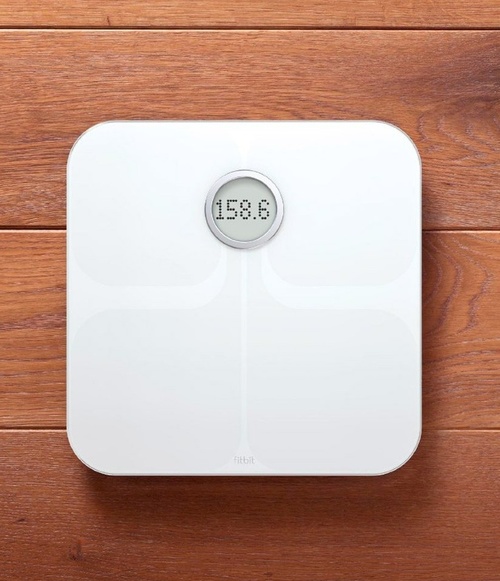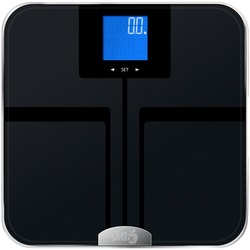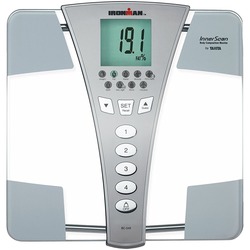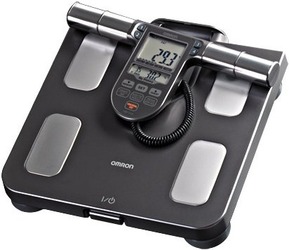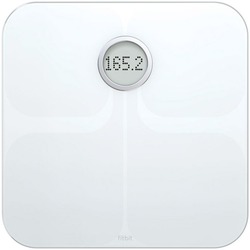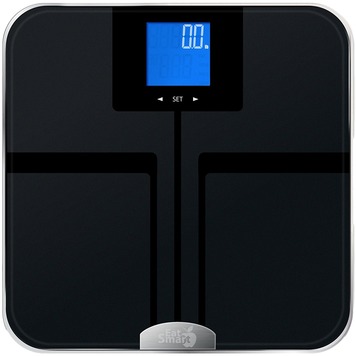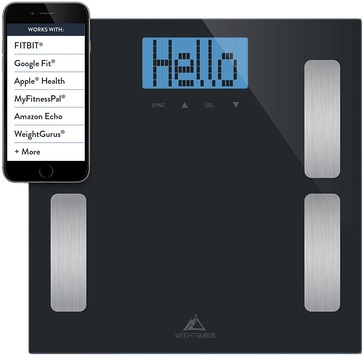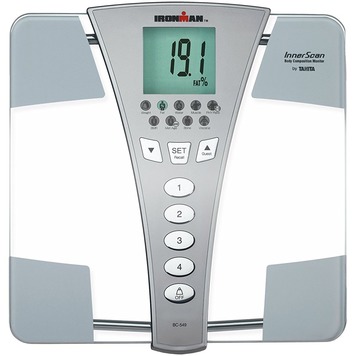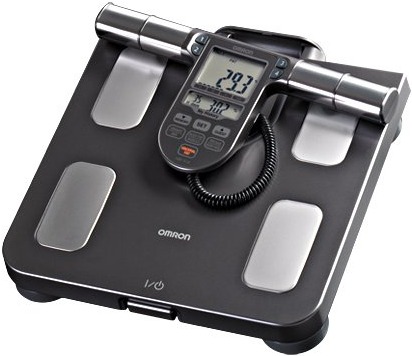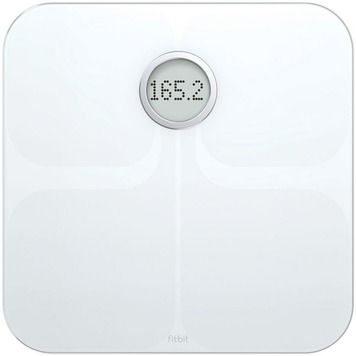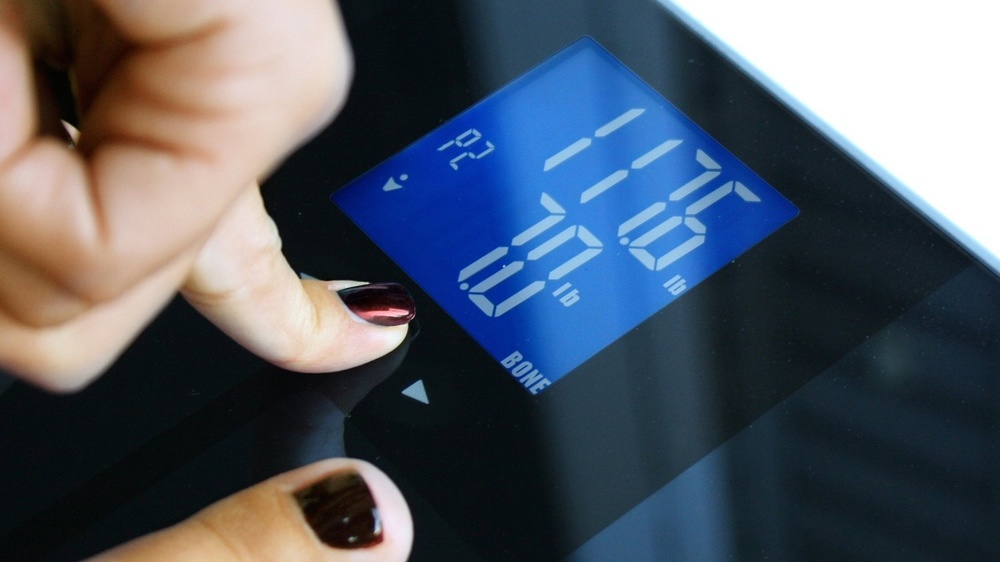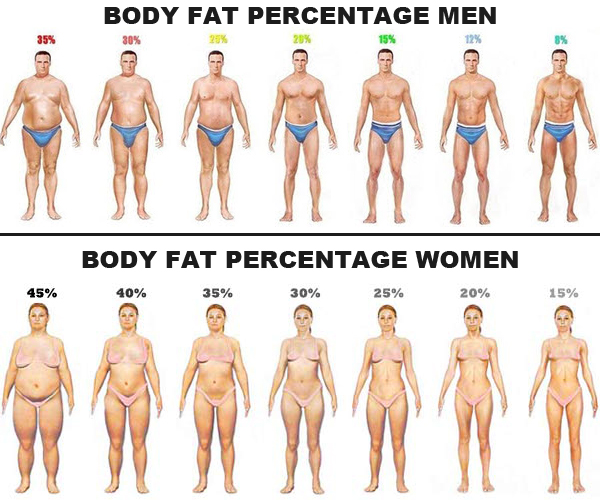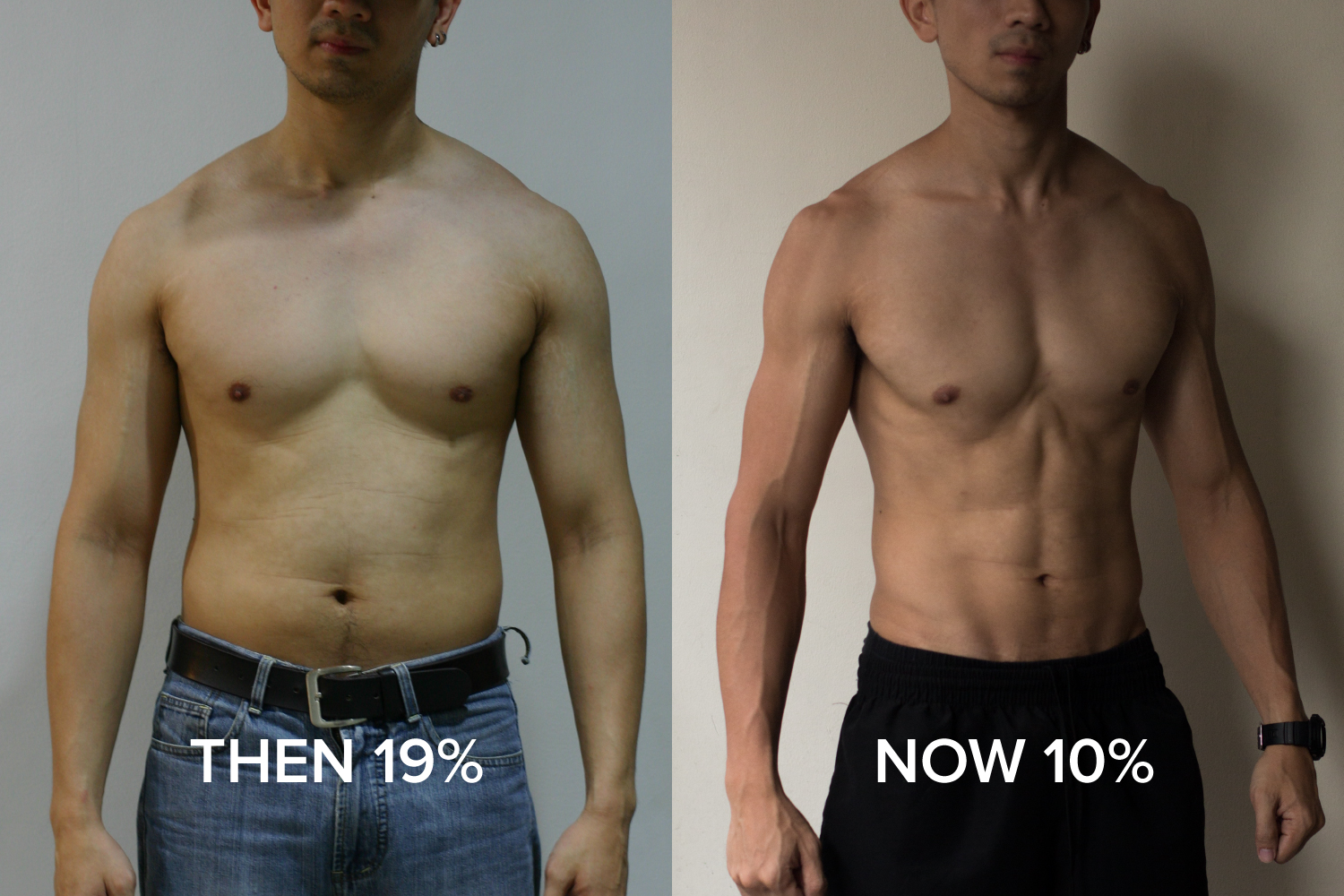If you can’t measure your success towards your fitness goals, how will you know if you’re doing it right? Tracking your physical progress is not only a quality assurance check of your diet and exercise regimen, but also a means of motivation as you see yourself getting closer to your goal day after day.
One of the most important variables to track is your body fat percentage. Body fat can be tracked using several different tools, but the most common (and the easiest) is a body fat scale. These specially-designed scales work by combining your age, weight, height and gender into account before doing an automated calculation that will tell you your body fat percentage.
However, as with all things technological, there are some variations in quality, durability and user-friendliness of these contraptions, so doing your due diligence during the buying process will definitely not only give you a more accurate reading, but will save you money in the long run by not having to replace it.
All of that due diligence can be overwhelming for such a niche piece of equipment, though, so we have taken a look at some of the body fat scales on the market, ran the numbers, scoured reviews and came up with a top five so you can choose the best body fat scale for your personal needs.
Top Pick: EatSmart Precision GetFit Scale
EatSmart has been a cornerstone of the scale market for some time now, manufacturing all kinds of scales including body weight scales, body fat scales, kitchen scales, and more. They are known for their accuracy and dependability with regular-use, everyday items. Their Precision GetFit Digital Body Fat Scale is an extremely user-friendly scale that does its job quickly, simply and accurately, all at a very affordable price – what more do you need?
In addition to being a simple-to-use scale, it does have a few easily accessible features that surpass simply body fat percentage. This scale will also tell you your muscle mass, bone mass and the amount of water in your body. All of these are useful for people looking to gain muscle mass, or feel people who are carrying around some water weight and want to see how that is affecting their total body weight. These are all interesting metrics, and good things to track (with the exception of bone mass, that won’t change unless a debilitating bone disease is present).
The Precision GetFit Digital Scale has a 3.5” backlit display, has a weight capacity of 400lbs and is accurate within 0.2lbs, which reviews across the net seem to back up. The only apparent drawback of this scale is the fact that you can’t use it when there is excess moisture in the air (after a bath or shower), so this may best be stored for use separate from bathing time.
This scale also lacks the ability to sync to your smartphone via bluetooth, if you’re into that sort of thing. Other than those two minor mentions, this is the best body fat scale out there – so popular, in fact, that it’s the #1 best-selling body fat scale on Amazon. Check out the 5,000+ reviews for yourself.
Runner Up: Weight Gurus Digital Body Fat Scale
The Weight Gurus Digital Body Fat Scale is in many ways pretty identical to our top pick. 400lb weight limit, high accuracy, affordable and it measures all of the same metrics that our top pick does. Why second place, then? A pretty consistent view of this product (according to user reviews), is that this is a fantastic product, but the accuracy starts to fade a little more quickly than other models. If this were an analog scale, you could calibrate it; but since it isn’t, once the accuracy fades, it has to be replaced.
However, with the main drawback out of the way, let’s get to the exciting benefit this scale offers that our top pick doesn’t: bluetooth syncing with your smartphone. Several apps support bluetooth syncing with a smart scale, such as this one, to produce graphs and data plots that can provide a fun tool to view your feedback on the go, and provide a visual aide to make tracking a bit easier. The Weight Gurus scale is a great piece of tech, and certainly a useful scale, but if you have longevity at the forefront of your mind, the EatSmart GetFit scale slightly edges the Weight Gurus out in this instance.
#3: Tanita BC554 Ironman Body Comp. Monitor
The Ironman Body Composition Monitor by Tanita has most of the bells and whistles (with the exception of muscle mass percentage) of the top 2. The main marketing tool for this scale, however, is something that neither of the top 2 scales offer, which is body age.
“Body age” basically takes all of your calculated information (BMI, height, weight, body fat percentage, bone mass percentage) and tells you how “old” your body is. While this is an interesting gimmick used by several health clubs, it honestly doesn’t really mean anything. Knowing the metrics themselves are enough without tallying them up into some fake number. However, this scale does capture the metrics accurately and it looks like something out of a sci-fi movie.
There are many more modes and bells and whistles on this thing, which can come in handy, but these extras have significantly upped the price point to around $150. With several complaints about the durability of the buttons on the scale, $150 does seem a little steep. Nonetheless, if you want a scale that has a ton of features packed into it and are willing to shell out for it, the Tanita BC554 is a good scale to have around.
#4: Omron HBF-514C Body Comp. Monitor
The Omron HBF-514C Body Composition Monitor is one of the most prolific body fat scales in clinical settings. This is partly due to the extra sensors (7 instead of the usual 4) that give increased accuracy. This is also due to the fact that it simply offers more metrics than the standard body fat scale. Weight, body age, body fat percentage, visceral (stomach) fat, skeletal muscle, BMI and resting metabolism. Sounds great, right? Well, the accuracy of this scale sounds great, but the rest seems a little over the top.
We already discussed body age and how that’s basically a load of bologna, but what about visceral fat? Visceral fat is basically fat that’s stored inside the stomach cavity, and the percentage, when compared to body fat percentage, tells you how much of your body fat is on your stomach. It sounds useful in theory, but when you lose fat, you don’t lose it from one specific place – it goes from everywhere at once.
Resting metabolic rate is equally as unimportant, as it is basically the amount of energy required for an individual to stay alive (measured in calories). This is an interesting piece of information to know, but not pertinent to staying healthy and certainly not pertinent to tracking fitness progress.
Overall, the Omron HBF-514C Body Composition Monitor has great accuracy and is a trusted piece of equipment across the board. If you don’t mind all of the extras and the slightly above average price tag, it’s a solid scale that will last you a while.
#5: FitBit Aria Wi-Fi Smart Scale
Like Apple, FitBit has made several accessories to go along with their pioneering, step-tracking bracelet. Their Aria Smart Scale connects to Wi-Fi or bluetooth and uploads your body composition information to FitBit.com (after you set up a profile). The online tracking capabilities and compatible mobile app make this scale stand out from the crowd. In functionality, though, the FitBit Aria simply didn’t stack up to the competition.
This scale only measures body weight, BMI and body fat, as opposed to the others that measure muscle mass, bone mass, water weight, etc. There have also been several reviews stating that the scale is difficult to connect to wi-fi without positioning the scale within close proximity of a router. I don’t know about you, but my router isn’t in the bathroom.
Although it lacks in some features, this scale is very user-friendly and pretty accurate, although the body fat percentage has been known to fluctuate up to 2%. With all said and done, this scale is fine. It’s A-OK. It tells you what you need to know and doesn’t cost a fortune (though, it is more expensive than our top 2).
#6: Nokia Body+ Body Composition Wi-Fi Scale
The last scale we’re going to review for you today is theNokia Body+ body fat scale by Nokia. You may have come across this scale before, when it was called the Withings Body+ Scale, but Nokia has since bought them out.
The Body+ scale is a very robust smart scale, that tracks nearly everything you’d want a smart scale to track. Metrics include your weight, fat mass, muscle mass, BMI, body fat percentage, bone mass, and even your hydration level!
The scale synchs up perfectly with the Nokia Health Mate app via bluetooth, which has a beautiful interface with lots of great graphs to track your progress.
The scale is well-made and has a very stylish design, that doesn’t look out of place no matter where you place it. It measures your weight in either 0.2lb or 0.1kg intervals, which is more than accurate enough for most.
I like that not only is the scale precise, it is consistent. While some cheaper body fat scales will give you numbers all over the board, even when stepping on the scale minutes apart, the Nokia Body+ is spot on every time.
If the previously mentioned scales haven’t yet piqued your interest, consider the Nokia Body+ scale. While it didn’t rank near the top, it was worth a mention and you likely wont be disapointed if you bring this one home!
How Do Body Fat Scales Work?
Body fat scales use bio-electrical impedance to record your body fat percentage. Basically, they run a very small current of electricity between two points (usually your hands or feet), and measure the how much the current is impeded, or halted by your body fat. This method is effective, quick and fast, which is why it is also widely used by fitness professionals and also by healthcare professionals.
Choosing The Best Body Fat Scale For You
With most pieces of technology these days, the devil is in the details. However, with body fat scales, less flash and more functionality is the way to go. If, like most of us, your priority in buying a scale is to see your body fat percentage and your regular overall weight, you can streamline your shopping and end up with a more functional piece of equipment that will likely last longer due to the fact that you’re only asking it for one or two functions. However, there are some folks out there that want a full health checkup every time they step on the scale, which is fine, but they’ll end up paying more for a scale that may not be as durable or user-friendly.
No matter which type you’re personally interested in, with all of the unnecessary flash and snake oil some body fat scales can offer, there are a few guidelines and base qualities you should be looking for in order to find the best body fat scale. See below.
User Interface
There are several scales on the market that have a lot of functions, with some of them that are very useful, but they require strict adherence to the manual and 20 different steps, buttons and arrows to get to. The second major intention of any piece of technology after performing its function correctly and consistently should be to be user friendly. Body fat scales should be functional and useful, not a nuisance based on the time and effort required to get the information you’re after.
Accuracy
When comparing body weight scales that are analog and digital, analog always wins out for consistent accuracy because they can be calibrated, whereas digital scales cannot. However, when it comes to body fat scales, nearly all will be digital due to the scale’s need for bio-electrical impedance (as discussed above). Therefore, doing your due diligence to read the reviews and verify accuracy will save you headaches and confusion later on. It can be extremely frustrating when you have an inaccurate scale when you’ve been lifting and dieting like crazy and the scale doesn’t budge, or if you step on it twice in a row and get vastly different readings.
We’ve taken the liberty of verifying accuracy readings and including them in the comparison table at the top of the page so that you can easily compare the accuracy of each model. Obviously the best body fat scale is going to be one with the lowest variable, but when you get down into the range of tenths of a pound (like each of the scales in our guide are), all are pretty much on the same level when it comes to accuracy.
Durability
Durability should be at the forefront of your mind with any purchase; well, except food. If you find a great scale that functions well and is extremely user-friendly, but it only lasts a month, that’s you still out a few bucks. Here’s a tip for online shopping: if something looks flimsy, it is. Make sure to read the reviews and look at the specs for materials, weight ratings, etc. so you can take that information and find a scale that will help you track your goals for as long as possible.
Cost
With a lot of products in the health and fitness industry, there are some pretty clear price levels with direct correlations to the quality of the product. Scales are a bit of a grey area in that respect, unfortunately, meaning the best body fat scale isn’t necessarily the most expensive one.
Due to the fact individual models can fluctuate in quality, even from some trusted brands, you won’t know if it’s working well until you’ve used it a few times. Define your price range, find the highest rated scales, compare and contrast. Going too low will get you an unreliable scale, and going too high with the ideology that more expensive must be better can empty your wallet and still leave you with a scale that isn’t fantastic.
Once you’ve checked out a few body fat scales and shopped around online a bit, the sweet spot of your price range will start to define itself naturally.
What Is Body Fat Percentage & How Does It Affect Me?
Body fat percentage, as mentioned earlier, is the amount of fat that make up your total body tissues. Organs, muscles and bones are the other tissues besides fat in your body. Maintaining a low body fat is essential, but not TOO low. Having a dangerously low body fat can be as dangerous (in a different way) as too high of body fat. Below are some of the main functions that body fat performs, and thus reasons why you should try to maintain a healthy body fat level instead of just pushing for the lowest percentage possible.
Maintenance of Healthy Skin and Hair
Body fats (lipids) are responsible for several healthy functions in the body, one of which being the maintenance of your hair and skin. You’ve probably seen ads on TV for various shampoos, conditioners and lotions that have different oils in them to help rejuvenate your hair. Your body is also responsible for putting healthy oils in your hair and skin to keep them hydrated and healthy.
Cushion for Organs
Another reason why it is important to maintain healthy body fat levels is because body fat provides cushion for your organs. There are layers of fat around your organs that keep them from moving around, and can protect them from rupturing during an impact of some sort.
Absorption of Vitamins
If you’ve ever heard the phrase “fat-soluble”, then I congratulate you on passing high school biology. There are several vitamins that we cannot absorb, break down and make use of without proper levels of body fat. These vitamins are responsible for essential body functions, energy levels and general body maintenance and upkeep. If you have a dangerously low body fat percentage you won’t be able to make use of these vitamins, and your body will discard them as waste.
These dangerous levels of low body fat only occur in extreme cases, usually due to extreme overdieting, eating disorders or drug addiction. On the flipside of that issue, we get the more common issue: too much body fat. Too much body fat can have seriously detrimental effects on your health, and obesity is a widespread problem here in the US. High body fat leads to heart disease, arthritis, loss of mobility, clogged arteries and several other health defects.
The healthy body fat percentage range for men is between 14% and 25%, with athletes and fitness junkies being healthy down to around 7% due to healthy diets and exercise regimens. For women, it’s between 21% and 30%, with athletes being healthy down to around 14%. The bodies of women have more fat tissue in their composition, and thus have higher acceptable body fat levels.
Body Fat Loss vs Weight Loss
There is a misconception about being healthier in that people feel they want to lose weight, rather than fat. People become much too critical of their weight when they step on the scale at various times of the day, and while weight does go down as body fat is lost, it is an unreliable way to track progress.
Your body weight fluctuates throughout the day. Meal times, bowel movements, water retention and several other factors can affect your weight throughout the day, while your body fat level is more stable and increases and decreases only due to fat that you either put on or burn off.
Body weight is also a bad metric to measure by because two people with totally different body compositions can weigh the same amount. Muscle mass, bone structure and height all play into your average weight, and comparing your weight to someone else’s is like comparing fingerprints.
Body fat, however, looks pretty uniform across the board. Why is this? Body fat is such a measurable metric because it is strictly a percentage of the whole. If you’re 5’3” and 130lbs, a 6’4” guy who weighs 200lbs might have a similar body fat percentage, and will certainly have a similar body type in terms of stored fat.
Weight loss, rather than body fat loss, is also cumulative. If you stop eating, or cut your protein intake dramatically, you will lose weight, but some of this weight will be muscle.
With a regular scale, you have no way to tell how much your body fat is decreasing relative to the other tissues in your body. Since body fat is a more consistent way to monitor your body composition, and it is equally as easy to measure, stepping on an analog scale really should be a thing of the past to monitor and track fitness goals outside of just general information.
What’s The Difference Between Body Fat Percentage & Body Mass Index?
A person’s body mass index is a general measurement composed of a simplified calculation to give a ballpark idea of a person’s approximate health. None of that sounds extraordinarily accurate, does it? That’s because it’s not. The body mass index was created to give a quick, general idea of a person’s body composition with calculations you can do on the fly.
BMI uses two metrics, height and weight. For the average Joe or Jane, BMI is not optimal, but it’s fine. The majority of the population isn’t hitting the gym 4 days a week and hitting a hard diet of broccoli, chicken and sweet potatoes. What I’m getting at is that people who don’t practice healthy and fit lifestyles can be measured by BMI with relative accuracy. However, the biggest drawback to BMI is that it doesn’t account for muscle mass, which is why gymrats were brought up.
Remember how we mentioned earlier that two people could weigh the same but have completely different body compositions? That’s why body mass index is ineffective as a measuring tool. Someone who is 6’1”, 190lbs but has a body fat percentage of 28%, will have the same BMI as someone who is 6’1”, 190lbs and has muscle stacked on and a body fat percentage of 8%.
For visual reference, the below image compares the transformation of a man from 19% body fat to 10% body fat. In both images, the man’s overall weight is 155 lbs. See the difference?
If you are an avid lifter, someone who goes to the gym pretty often or even someone who has an interest in fitness, BMI is not for you. Unfortunately, there are some big box gyms and health clubs that live and die by the BMI, and feel the need to include it in assessments and follow-ups. If you have a trainer that uses the BMI as a metric to track your progress, find a different trainer.
For further reading on the comparison of body fat versus BMI, check out Weight Loss 101 from Verywell.
Final Thoughts
This may seem like a lot of information for something you simply step on every morning, but tracking body fat requires a little more information in order to make sure you do things right. Too often body is confused with BMI or traditional weight tracking.
Each of the body fat scales above offer accurate measurements and good functionality, but as you read in our reviews, there were certain pro’s and con’s to each model to be aware of when choosing the best body fat scale for you. Even if none of the above scales worked for you – as long as you keep our takeaways in mind and follow our guidelines when shopping, you’re sure to find a scale that is affordable, durable, functional and user-friendly.
Body fat is a much more useful and accurate metric to track progress than body weight, and other metrics. Hold yourself accountable and don’t be afraid of the scale. Not progressing as fast as you should be? Crank up the intensity. Not progressing at all? Make a change. Without measurement, there can be no verification of progress. Keep your goals in mind, get to work and make sure to track your progress!
